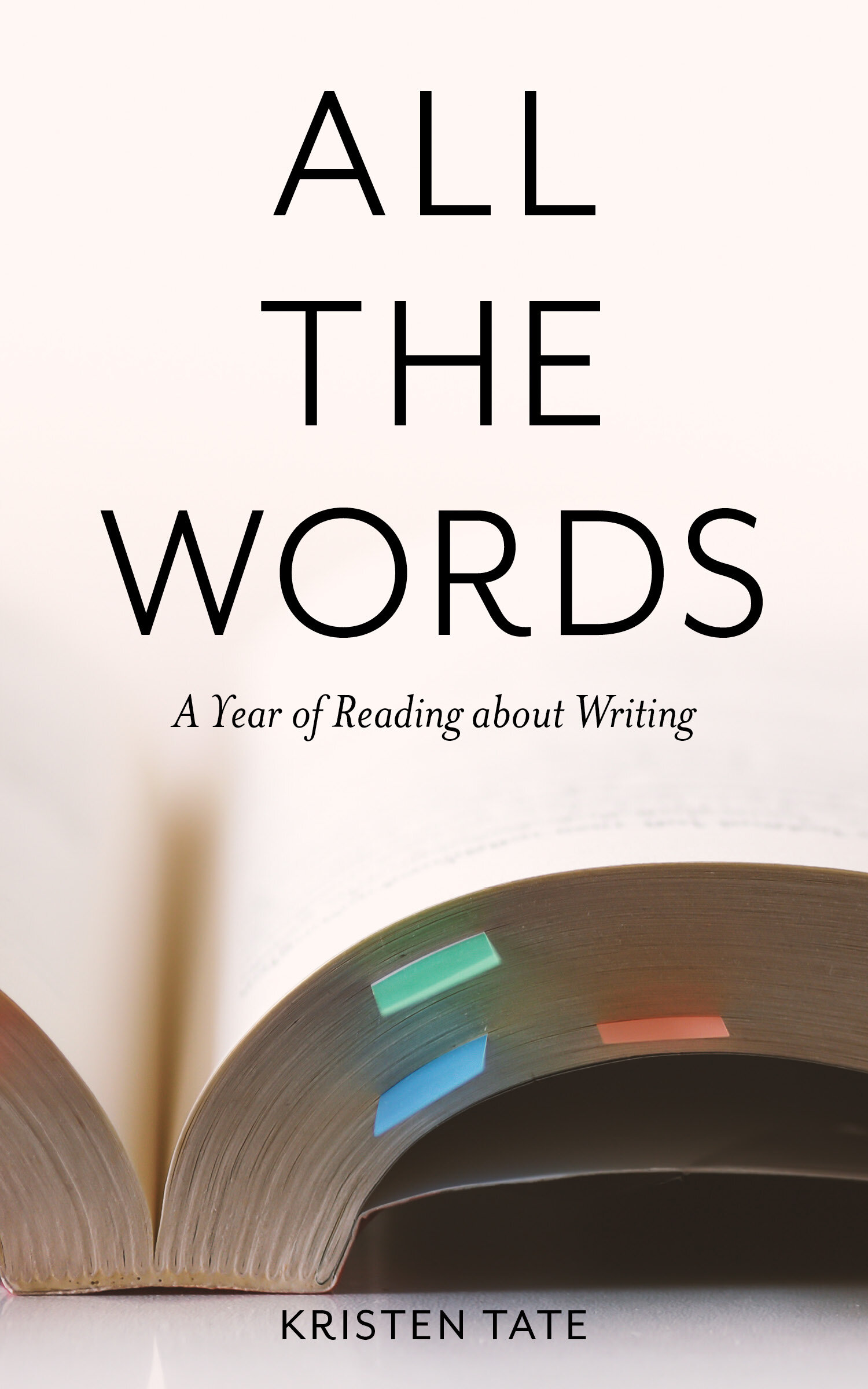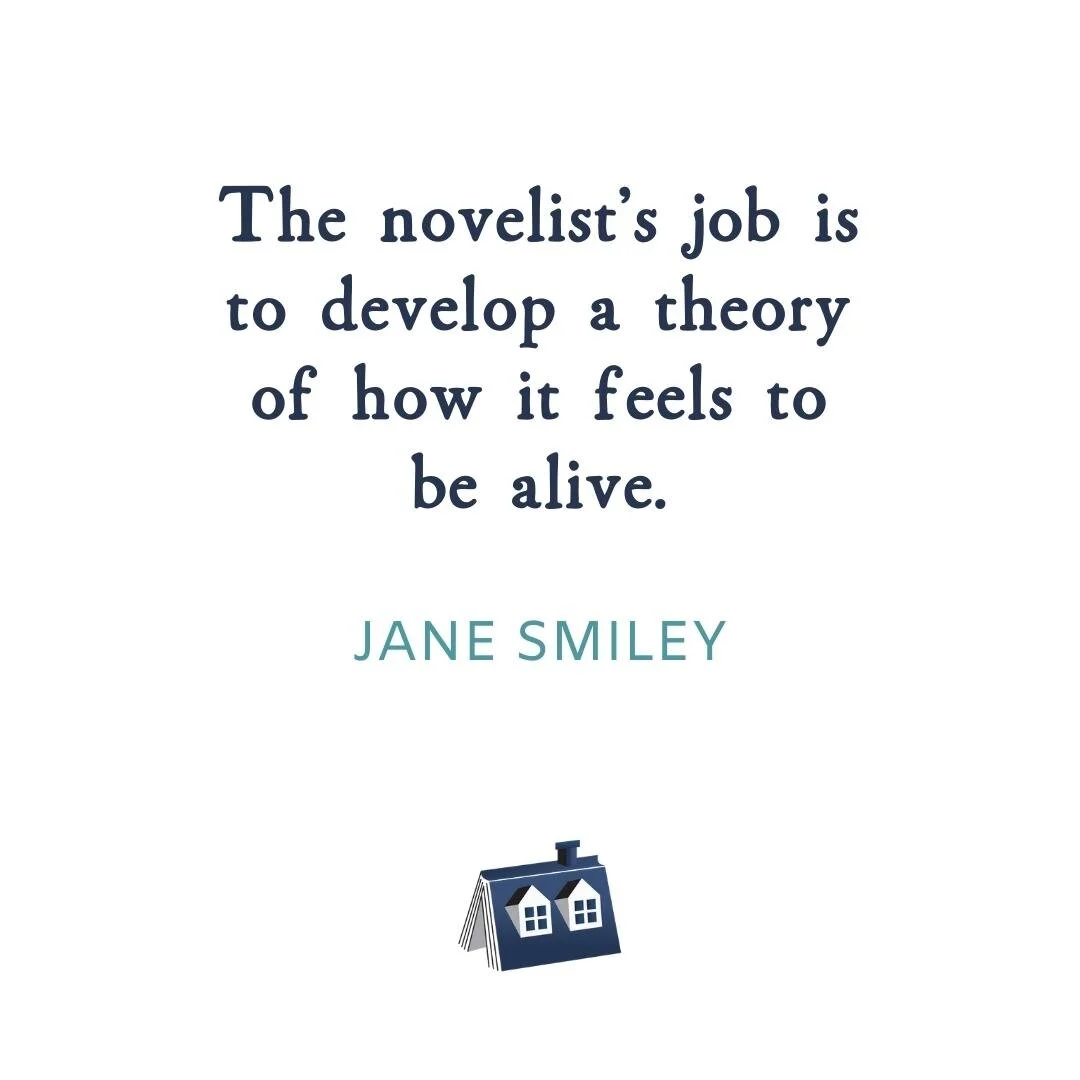13 Ways of Looking at the Novel, by Jane Smiley
This is part of a series of weekly reviews of writing craft books written in 2019, later revised and collected in Kristen’s book All the Words: A Year of Reading About Writing. Read the first chapter or buy the book in our Shop.
It is week eighteen of 2019. How’s the writing going for you in these bright and beautiful days of spring (or fall, for my southern hemisphere readers)? If you are feeling stuck or jaded, this week’s book might be the antidote, so let's get right into it.
Jane Smiley’s 13 Ways of Looking at the Novel is not, as far as I can tell, very much read. I haven’t come across it once in all the lists of recommended books for writers I have scanned while planning this newsletter. Yet Jane Smiley is a well-regarded novelist. A Thousand Acres won the Pulitzer in 1992, and she has written in a remarkable range of genres, from historical fiction to mysteries to comedies of manners.
The truth is, 13 Ways of Looking at the Novel is a big, unwieldy book that resists categorization. Smiley does not, as the title implies, present us with thirteen well-defined lenses for exploring the novel as a genre. Instead, her chapters tackle big questions: What is a novel? How did it develop across centuries? How do novels interact with history, morality, psychology, politics? How do you write one yourself? What happens when a novelist gets stuck? What does someone learn when she reads one hundred novels over the course of three years?
There are thirteen chapters (including the introduction) in the main section of the book, and I imagine the editorial team at Random House throwing up their arms in a production meeting and declaring, “Let’s just call the thing 13 Ways of Looking at the Novel.” It’s a wandering, questioning, circuitous kind of book. There are no section headers, no bullet points, no checklists. You have to find your own path through it and make your own meaning from it.
In the early chapters, Smiley starts from first principles. When she asks “What is a novel?” her first move is to consider the book as an object: “An inexpensive paperback book from a reputable publisher is a small, rectangular, boxlike object a few inches long, a few inches wide, and an inch or so thick. It is easy to stack and store, easy to buy, keep, give away, or throw away. As an object, it is user-friendly and routine, a mature technological form, hard to improve upon and easy to like. Many people, myself among them, feel better at the mere sight of a book.”
Slowly, Smiley builds toward a bigger point: “The leaves of paper pressed together are reserved and efficient as well as cool and dry. They protect each other from damage. They take up little space. Spread open, they offer some information, but they don't offer too much, and they don't force it upon me or anyone else. They invite perusal. Underneath the open leaves, on either side, are hidden ones that have been read or remain to be read. The reader may or may not experience them. The choice is always her own.”
Smiley returns often to the concepts of power, freedom, and choice. She compares novels to a meditation guided by the writer and to a game in which the writer sets the rules. The reader, however, always has a choice about whether or not to participate in the meditation or the game, and in some fundamental way, the novel doesn’t exist without the reader. As Smiley notes, experiencing a novel requires sustained receptivity on the part of the reader: “While all art forms promote this state of receptivity, with the novel it is uniquely sustained—it is not possible, for example, to contemplate a painting for ten or twelve hours, the amount of time the average reader would need to read a five-hundred-page novel.”
The prosaic quality of length, then, turns out to be a key feature of novels and a source of their power. As Smiley observes, “When I have read a long novel, when I have entered systematically into a sensibility that is alien to mine, the author's or a character's, when I have become interested in another person because he is interesting, not because he is privileged or great, there is a possibility that at the end I will be a degree less self-centered than I was at the beginning, that I will be a degree more able to see the world as another sees it.” As a result, novels have the potential to be a subversive force in the world.
These are big claims, and Smiley uses formal, almost academic, language to make them. But chapter 10, “A Novel of Your Own (I),” marks a dramatic change in tone and tense. Instead of “the reader” or “the novelist,” there is, simply, “you”: “Now that you have decided to begin your novel, you may congratulate yourself. You have not been asked or groomed to write a novel. . . . Chances are, no one wants you to write your novel—if they say they do, they are just meaning that you should get it over with or get on with it. . . . You are, therefore, free.”
In this chapter and the next, Smiley lays out her advice about such familiar matters as plot, characters, and point of view in terms that are clear and encouraging. My favorite insight is about the relationship between setting and theme: “As with character and action, setting and theme feed one another. If your themes are too general, then investigate your setting more closely, and anchor your characters more deeply within their circumstances. If your story seems too trivial, then ask yourself about the connections between these circumstances and the larger human condition.”
Smiley also provides sound practical advice on the writing process. The first step is to write a rough draft without getting mired down. “Every rough draft,” Smiley counsels, “by being complete, is perfect.” Smiley then advises examining the climax, the exposition (the beginning ten percent or so), and the rising action or middle, taking notes about what’s working and what’s not working. She reassures writers, “You have plenty of ingenuity. If you are receptive to your rough draft but detached from it, you will come up with some sort of method that will make your novel palpable to you and spur your inspiration with a sense of progress.” She also reminds writers more than once that “the special bonus of novel-writing is that you can stop doing it any time you want to. If you remember at all times that no one ever asked you to write that novel, you will at least be preserved from feeling victimized by your work.”
13 Ways can also be read as a story itself – the story of a writer finding her way back to her words. Smiley tells us in the introduction that the idea for this book emerged when she became stuck two-thirds of the way through her first draft of her 2001 novel Good Faith: “I felt like Dante's narrator at the beginning of The Divine Comedy. I had wandered into a dark wood. I didn't know the way out. I was afraid.” Smiley leaves that story open and doesn’t return to it until chapter 12 when she describes how she found her way out of the wood. Along the way, however, we can also see her falling in love with Boccaccio’s Decameron, which would become the inspiration for Ten Days in the Hills, the novel she wrote after Good Faith. Her reading, in other words, allowed her not just to finish one book, but also to find the seed of her next. (I haven’t read Ten Days in the Hills, but Smiley’s description of what the book felt like to her in its early days makes me want to: “The new book looks spherical and self-contained, but jammed with things, like a spaceship made of Venetian glass, shining, intricate, and full of colors, not like any novel ever looked to me before.”)
13 Ways also offers the pleasure of vicariously comparing notes with a thoughtful, intelligent reader on books you know and love. (Or hate, as the case may be; Smiley, for example, dislikes Henry James’s “domineering manner” and finds the style of Grapes of Wrath “cloying.”) The second half of the book is composed of mini-essays on the hundred novels she read. Smiley suggests “that it be used like an old trunk full of fabric samples or a box of costume jewelry—it is not to be read through from beginning to end in search of a cohesive argument, but to be rummaged about in, in search of something interesting or striking.” Smiley shares my fascination with The Heptaméron, the sixteenth-century story cycle written by the French queen Marguerite de Navarre, calling it “a kind of rough draft for many novels yet to be written.” And I love her assessment of Anthony Trollope, who deserves to be more widely read today: “Trollope doesn't mind a little sin, and he knows that lives go on after the plot ends . . . . He is a novelist for adults.” Indeed.
13 Ways of Looking at the Novel also offers a model for a program of active, engaged reading that could become a daily practice or an intensive period of study for times in which you are stuck. I imagine a reader’s version of Julia Cameron’s morning pages: Pick a novel to study, preferably one that is outside of your typical range of reading, and try to pick apart how it works. How do these specific sets of words work together to create meaning? What effects are these words having on you, the reader? How does the author achieve these effects? This is active, pencil-in-hand reading. “For inspiration, keep reading novels,” Smiley tells us. “As you aim for perfection, don't forget that there is no perfect novel, that because every novel is built out of specifics, every novel offers some pleasures but does not offer some others, and while you can try to achieve as many pleasures as possible, some cancel out others.”
13 Ways of Looking at the Novel is the book to turn to when you find yourself wondering why you are spending so much time and intellectual energy on this novel-writing business. Smiley points out that “at the base of every novel is an argument the author is making about why a novel is worth writing, selling, and reading.” To read one, then, is to be reassured that this game you are playing, this extended meditation you are creating, is important. As Smiley puts it, “It's worth knowing that serious thoughts are being thought, and also that serious fun is being made of fools everywhere. It's also worth knowing, in dangerous times, that dangers have come and gone and we still have these books.” We need to have your book among them.
Here’s to considering the novel, y’all,
Kristen
Check out our Resources page for more in-depth articles on writing, revising, polishing, and publishing your novel. Sign up for our weekly newsletter for fresh content, and you’ll also get our free PDF with recommended reading for writers!



